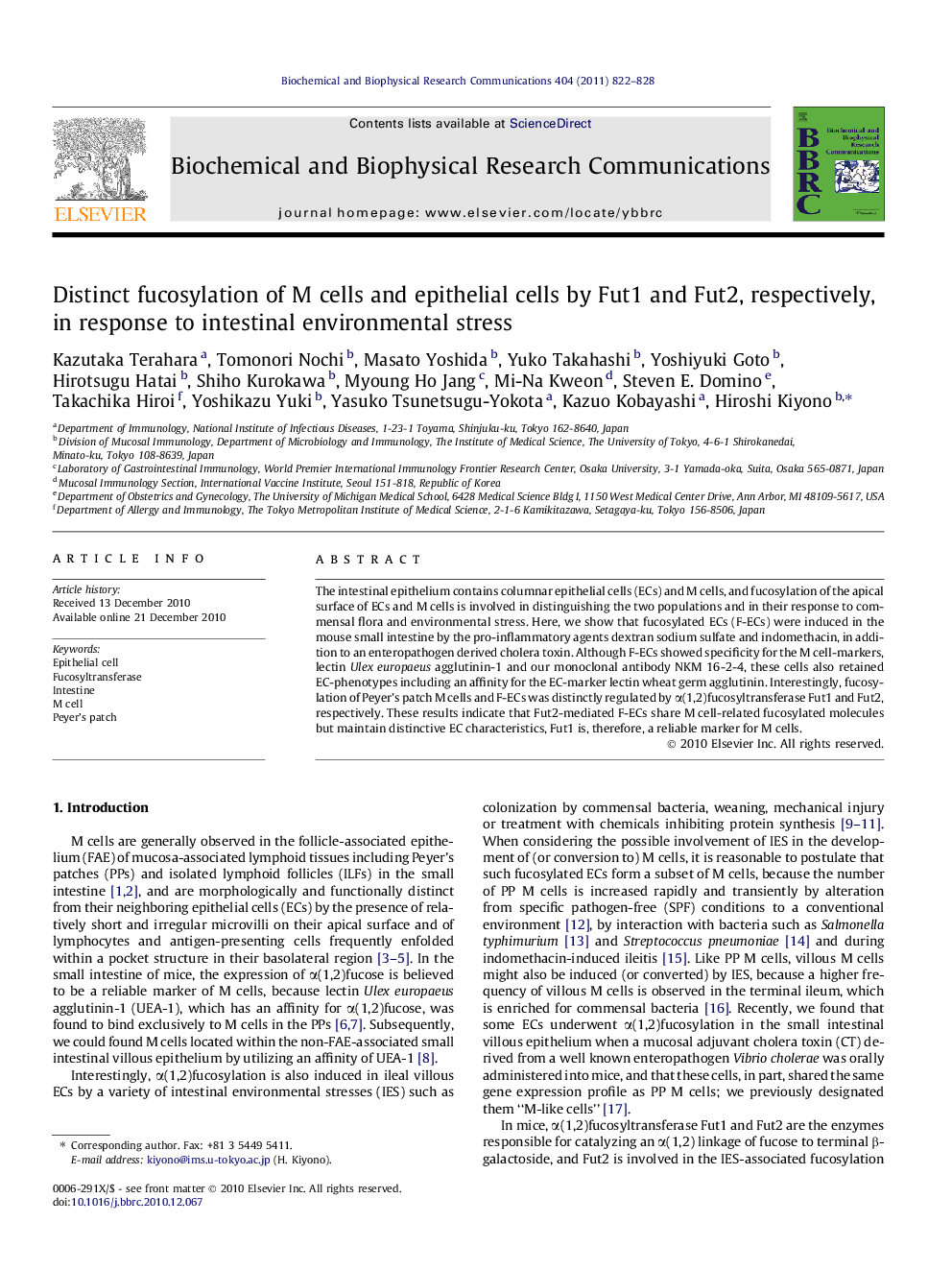| Article ID | Journal | Published Year | Pages | File Type |
|---|---|---|---|---|
| 1930784 | Biochemical and Biophysical Research Communications | 2011 | 7 Pages |
The intestinal epithelium contains columnar epithelial cells (ECs) and M cells, and fucosylation of the apical surface of ECs and M cells is involved in distinguishing the two populations and in their response to commensal flora and environmental stress. Here, we show that fucosylated ECs (F-ECs) were induced in the mouse small intestine by the pro-inflammatory agents dextran sodium sulfate and indomethacin, in addition to an enteropathogen derived cholera toxin. Although F-ECs showed specificity for the M cell-markers, lectin Ulex europaeus agglutinin-1 and our monoclonal antibody NKM 16-2-4, these cells also retained EC-phenotypes including an affinity for the EC-marker lectin wheat germ agglutinin. Interestingly, fucosylation of Peyer’s patch M cells and F-ECs was distinctly regulated by α(1,2)fucosyltransferase Fut1 and Fut2, respectively. These results indicate that Fut2-mediated F-ECs share M cell-related fucosylated molecules but maintain distinctive EC characteristics, Fut1 is, therefore, a reliable marker for M cells.
Research highlights► α(1,2)Fucose is considered to be a reliable marker of M cells in the mouse small intestine. ► F-ECs were induced by intestinal environmental stress. ► Fucosylation of M cells and F-ECs was regulated by Fut1 and Fut2, respectively. ► F-ECs retained EC-characteristics. ► F-ECs are a sub-type of ECs and should be distinguished from typical M cells.
